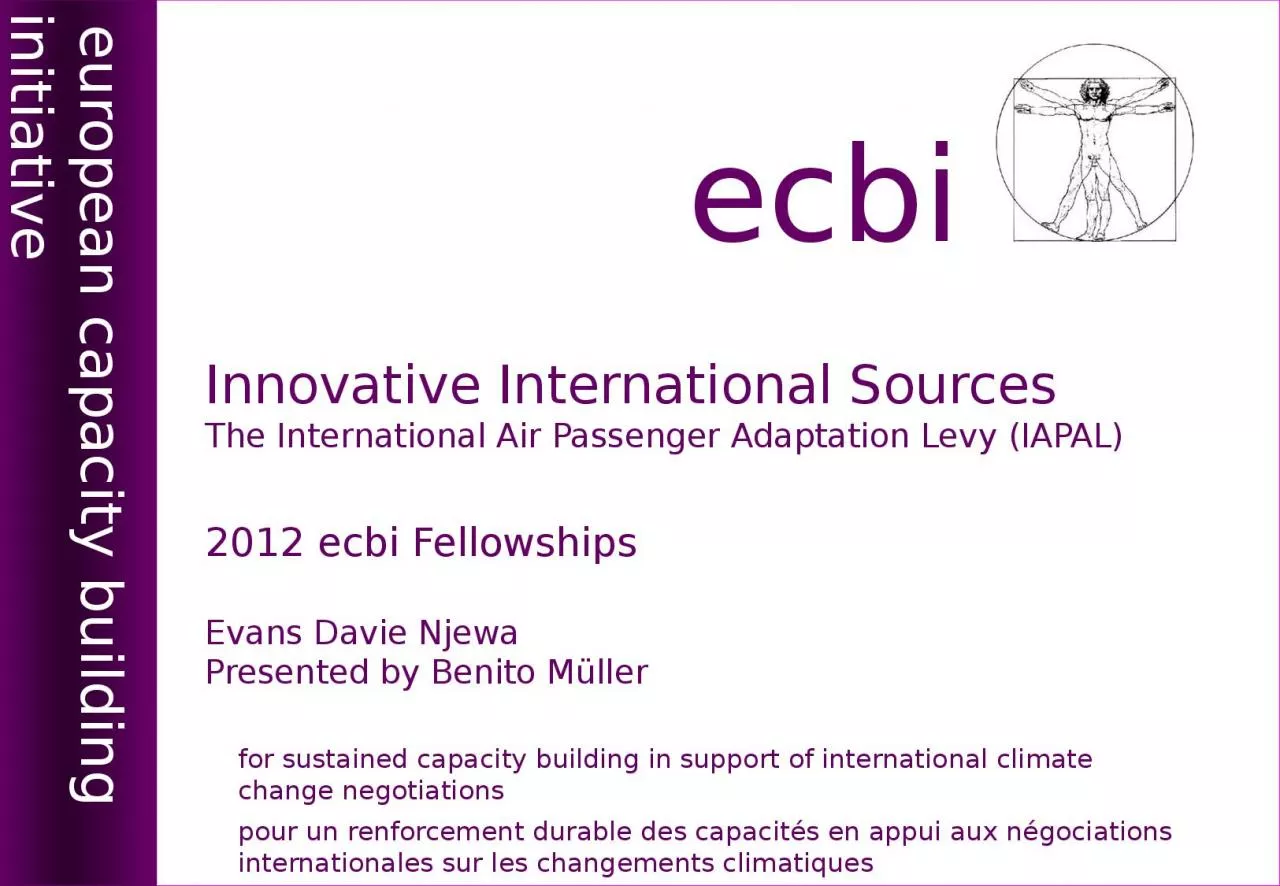

The International Air Passenger Adaptation Levy IAPAL 2012 ecbi Fellowships Evans Davie Njewa Presented by Benito M üller european capacity building initiative initiative européenne de renforcement des capacités ID: 1028888
Download Presentation The PPT/PDF document "Innovative International Sources" is the property of its rightful owner. Permission is granted to download and print the materials on this web site for personal, non-commercial use only, and to display it on your personal computer provided you do not modify the materials and that you retain all copyright notices contained in the materials. By downloading content from our website, you accept the terms of this agreement.
1. Innovative International SourcesThe International Air Passenger Adaptation Levy (IAPAL)2012 ecbi FellowshipsEvans Davie NjewaPresented by Benito Müllereuropean capacity building initiativeinitiative européenne de renforcement des capacités ecbi for sustained capacity building in support of international climate change negotiationspour un renforcement durable des capacités en appui aux négociations internationales sur les changements climatiques
2. IAPAL as an innovative sourceIn 2008, the Maldives, on behalf of the LDCs submitted a proposal to the UNFCCC for the IAPAL Key principles and concepts, relevant to climate finance include:(a) Appropriateness (polluter pays principle)(b) Equity: common but differentiated responsibilities and respective capabilities(c) Additionality(d) Predictability(e) Adequacy and accessibility
3. IAPAL basicsIt is a proposed new purchase tax on air tickets.Proceeds would be dedicated to investment in adaptation to climate change.Does not aim at reducing flight numbers and therefore aviation’s contribution to climate change.If a levy of US$6/ international air passenger travelling in economy class and US$ 62/passenger travelling in business or 1st class is introduced - can raise up to US$8-10 billion/year.Proposed implementation frameworkRevenue of the levy will go to an appointed climate Fund: Kyoto Protocol Adaptation Fund or the Green Climate Fund.Levy is to be collected by airlines from their passengers at the point of sale.Transferred by the airline to a dedicated account of the appointed Fund
4. Key economic and practical considerationsWhen the key economic and practical considerations are taken into account, there are no major demand or distortionary concerns with IAPALPrice elasticity:international aviation is a sector with a relatively low price elasticity of demandprice increases do not greatly reduce the demand for most flights2. Willingness to pay: explicit willingness to pay for climate change3. Compatibility with existing instruments and initiatives:IAPAL is not precluded with the application of other initiatives such as the European Union Emissions Trading Scheme (EU ETS)Lessons from similar instrumentsSeveral European countries already have an air passenger tax in place: France, the UK, Ireland, Denmark, Malta, Germany and AustriaThe French solidarity Levy is the closest to what is being proposed under the IAPAL
5. ConclusionsIAPAL is an example of an innovative instrument for raising adaptation funding that is new and additional to traditional flows of bilateral funding for adaptationWill not be subject to the problems of bilateral replenishmentWill be predictable, given the stability of the airline sector